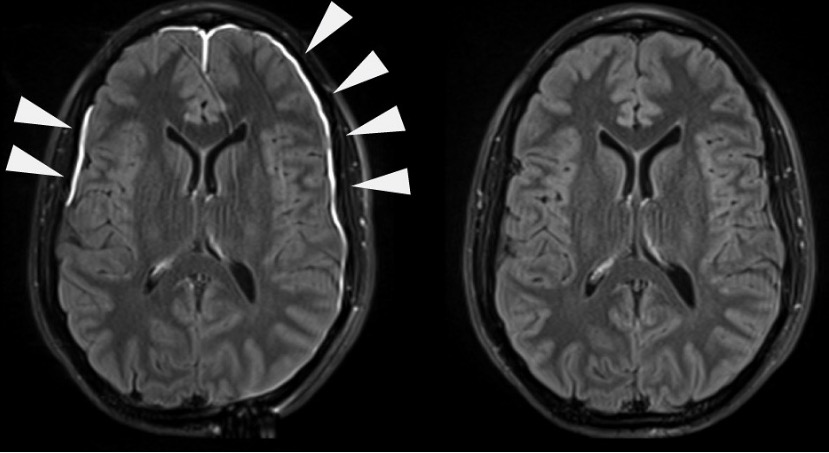Playlist
Show Playlist
Hide Playlist
Bacterial Meningitis: Definition
-
Slides Meningitis InfectiousDiseases.pdf
-
Download Lecture Overview
00:01 We turn now in our discussion of central nervous system infections to bacterial meningitis, a very serious infection indeed. 00:13 So, we would define bacterial meningitis as an infection of the meninges, of the coverings of the brain, specifically the subarachnoid space and brain as well. 00:27 It's really a meningoencephalitis, usually due to any of a variety of blood-borne microorganisms. 00:41 Now, among the causes of acute meningitis, actually viruses probably account for most cases of acute infection of the meninges, but viral meningitis is generally a benign disease. 00:57 It’s not terribly serious. 00:59 It’s troubling for the patient, but they get over this kind of an infection. 01:04 But blood-borne bacteria can cause a life-threatening problem. 01:10 Now, when a physician can't tell which it is, is it viral or is it bacterial, then that physician would be prudent to start antibiotics just in case it is bacterial. 01:26 Now, among the bacteria that cause meningitis – and there are many – these are the top five. 01:34 Streptococcus pneumoniae, Neisseria meningitidis, Streptococcus agalactiae also known as group B Strep, Listeria monocytogenes, and Haemophilus influenzae. 01:50 Haemophilus influenzae was the most common cause of meningitis in the past, but because we now have a vaccine against that particular organism, Haemophilus influenzae type B, it is no longer the most common cause of meningitis. 02:14 Now, turning to the epidemiology, we need to look at the causes of meningitis first among newborns. 02:23 And here, group B Strep, Strep agalactiae accounts for about 70% of the infections of the meninges, followed by Listeria and by the pneumococcus. 02:37 From one month to two years of age, look what is now top cause. 02:43 Streptococcus pneumoniae. 02:44 As I mentioned, in the past, it was Haemophilus influenzae, but that has essentially vanished in developed countries. 02:53 Neisseria meningitidis and Strep agalactiae follow behind. 02:59 From the age of two to the age of young adults, Neisseria meningitidis causes about 60% of the cases of meningitis, followed by the pneumococcus and Haemophilus influenzae. 03:16 In adults, the pneumococcus tops the list, causing 60%, with Neisseria meningitidis causing 20% and the others are relatively rare causes. 03:30 But by the age of 60 years plus, the pneumococcus accounts for most cases of bacterial meningitis and Listeria moves up the list, accounting for about 20%.
About the Lecture
The lecture Bacterial Meningitis: Definition by John Fisher, MD is from the course CNS Infection—Infectious Diseases. It contains the following chapters:
- Bacterial Meningitis - Definition
- Epidemiology
Included Quiz Questions
What is the most common etiology of bacterial meningitis in newborns?
- Streptococcus agalactiae
- Neisseria meningitidis
- Streptococcus pneumoniae
- Listeria monocytogenes
- Haemophilus influenza
What is the most common etiology of bacterial meningitis in a 1-year-old child?
- Streptococcus pneumoniae
- Neisseria meningitidis
- Streptococcus agalactiae
- Listeria monocytogenes
- Haemophilus influenzae
What is the most common etiology of bacterial meningitis in the geriatric population?
- Streptococcus pneumoniae
- Neisseria meningitidis
- Group B streptococcus
- Listeria monocytogenes
- Streptococcus agalactiae
What is the most common etiology of meningitis?
- Virus
- Streptococcus pneumoniae
- Streptoccus agalactiae
- Listeria monocytogenes
- Haemophilus influenzae
What is the most common cause of bacterial meningitis in a 15-year-old adolescent?
- Neisseria meningitidis
- Streptococcus pneumoniae
- Group B streptococcus
- Listeria monocytogenes
- Haemophilus influenzae
Which of the following statements about bacterial meningitis is TRUE?
- It constitutes an infection of the subarachnoid space and the meninges.
- It constitutes an infection of the meninges only.
- In constitutes an infection of the subarachnoid space only.
- It refers to the infection of the cerebral cortex.
- Much like viral meningitis, it is a benign and self-limited disease.
A 61-year-old woman is brought to the emergency department for altered mental status that developed this morning. She has a several-day history of fever and productive cough. Two weeks prior, she developed symptoms of acute bronchitis with hoarseness and nasal congestion, which have been slow to resolve. On exam, she is febrile (102°F) and confused. Her pupils are equal, round, regular, and reactive, but she exhibits a left VI nerve palsy. Her lungs reveal dullness to percussion and bronchial breath sounds in the right lower lung field. The heart and abdominal exam is unremarkable, but her neck is stiff and, when flexed, results in bilateral hip flexion. Complete blood count shows a white blood count of 18,000 with a left shift. Blood cultures are obtained and a lumbar puncture is successfully performed. What is the most likely result of a Gram stain of the cerebrospinal fluid in this patient?
- Gram-positive diplococci
- Gram-positive bacilli
- Gram-negative intracellular diplococci
- Gram-negative extracellular diplococci
- Pleomorphic gram-negative coccobacilli
Customer reviews
5,0 of 5 stars
| 5 Stars |
|
2 |
| 4 Stars |
|
0 |
| 3 Stars |
|
0 |
| 2 Stars |
|
0 |
| 1 Star |
|
0 |
a lot of help a lot of help a lot of help ssssssssssssssssss
crystal clear concept.very helpful lecturer.His voice is also very attractive.







